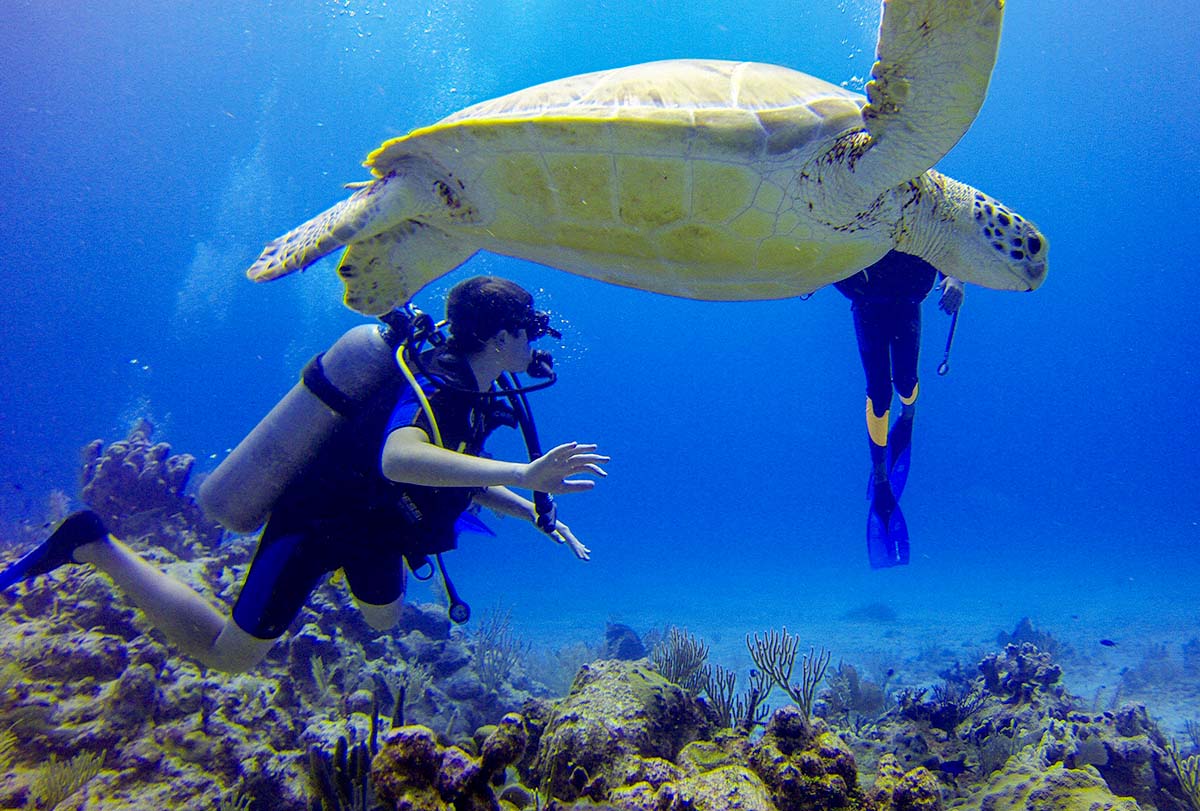
There are a lot of things you can do to become more comfortable with scuba diving. This includes getting a buoyancy device, learning to swim, taking your time, and getting certified.
Getting certified
If you’re a beginner scuba diver, you can get certified to dive by taking a class. There are two types of classes to choose from: a confined water course and a more advanced open water course. Both offer the chance to explore the underwater world while practicing scuba skills.
The confined water course involves several instructor led sessions in a pool. Students learn how to swim and use fins, a mask, and a buoyancy compensator. They also learn to descend and ascend safely and comfortably.
Students may also opt for the eLearning option, which allows them to study at their own pace. Using an internet connection and a dive-planning device, students can work on their knowledge at any time of day or night.
Scuba diving can be fun and energizing. Many new divers are looking for buddies to dive with. For others, the novelty of exploring a foreign environment is enough to keep them going.
Getting a scuba diving green light from your physician
If you are considering scuba diving, it is important that you ask your physician for a medical clearance before you dive. This will give you the ability to safely and comfortably dive. It is also an important part of the learning process.
The first thing to note about getting a medical clearance is that it is not a one-time event. You will typically need to be re-screened every year to ensure you are still healthy.
You must also inform your physician of any medications you take. This will help your doctor determine whether you will be at risk for decompression illness when you go scuba diving.
If you are planning on diving with friends, make sure you only dive with those who have been trained to do so. Scuba diving can be a safe activity if you follow the rules and regulations.
Getting a scuba diving buoyancy device
A Buoyancy Control Device (BCD) is a key piece of scuba diving equipment. It is designed to help you stay upright and afloat at all times, while also providing you with a comfortable dive experience.
The most common type of BCD is the jacket-style, which has air pockets at the front of the body. These pockets help keep the diver upright at surface and in position when swimming backwards.
Another style is the travel-style BC, which is very lightweight. It usually comes with a travel bag. Many of these models feature quick-release weight pockets, which eliminate the need for a separate weight belt.
As with all diving gear, choosing a BC that fits well is important. If your BCD is too big or too small, it can make you uncomfortable while you’re underwater. You may also get drag from too much air in the device.
Taking your time
When scuba diving, you should take your time and enjoy the experience. You should also have a plan to be safe. A plan that includes emergency procedures. Moreover, it is important to take notes of your dive experience and make sure that you keep it in mind. This will help you remember the sights that you saw and also let others know about your dive.
If you are a beginner, it is a good idea to have a dive buddy. Taking your time when scuba diving is much more enjoyable when you have a companion. It is also safer when you stay with a buddy. Also, you should always have a look around for a minute before you swim away. Once you see something interesting, you should stop and point it out to your guide.
Getting a scuba diving library
One of the best things about being a scuba diver is the opportunity to explore the undersea world. While the thrill of a deep dive can be overwhelming, there are a number of things you can do to prepare for your next adventure. This includes getting a scuba diving library. A great library will help you stay up-to-date on all the latest dive techniques and destinations. These guides will give you access to everything from the best dive sites to popular species. You’ll be able to find guides to the best scuba diving in the United States, Asia and the Pacific Islands.
Another good resource is PADI’s eLearning. Using PADI’s online courses will enable you to spend less time in class and more time enjoying your favorite scuba diving locale.
